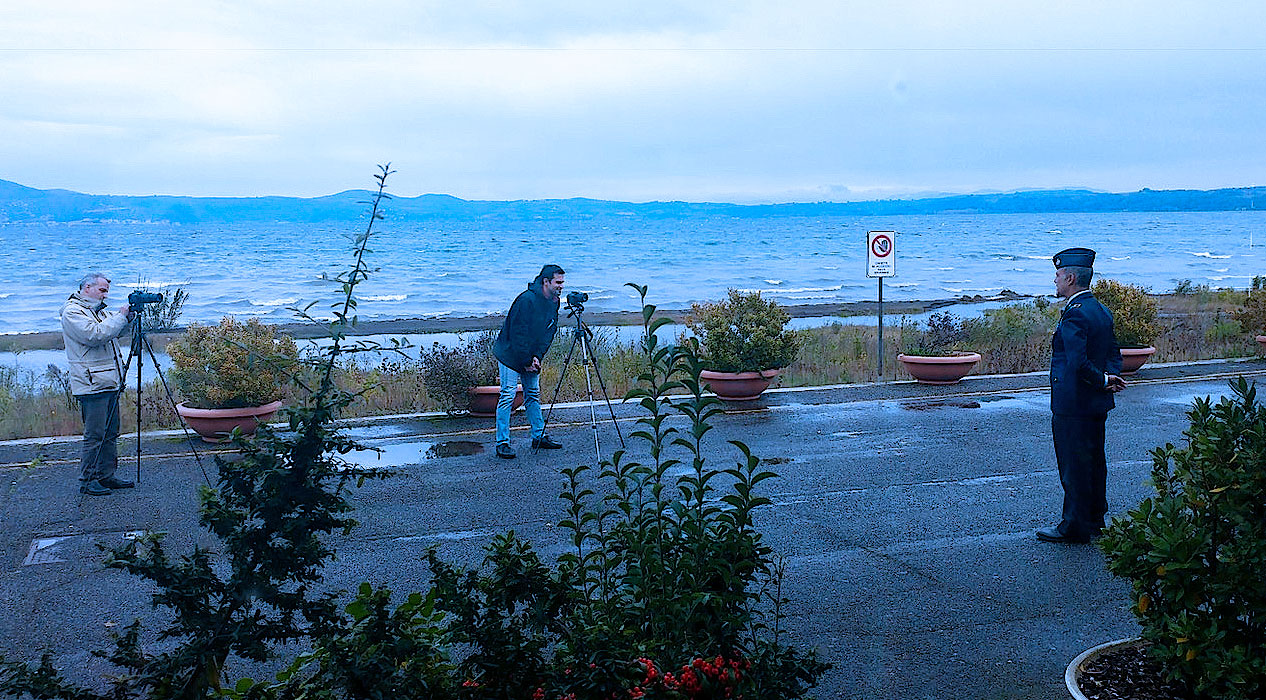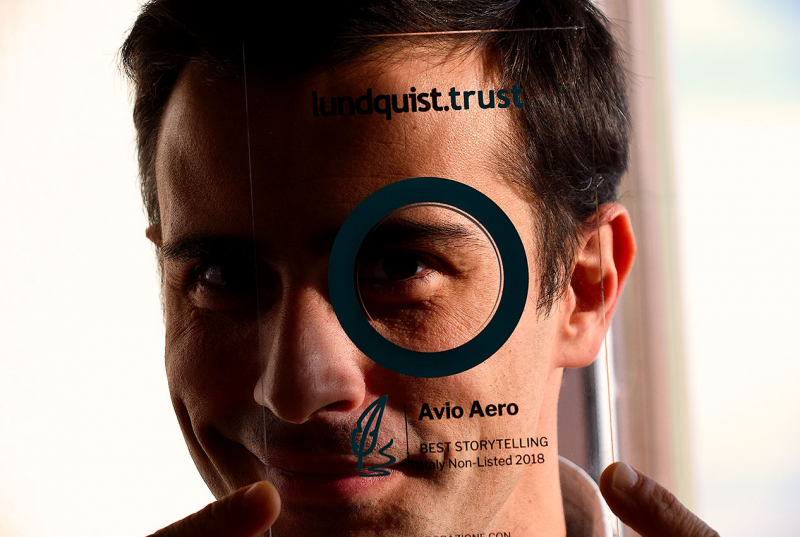Culture
The importance of Stories
A special award for our ability to tell about case studies, products, projects, initiatives and above all people, the reason why Avio Aero’s Storytelling works.
Nov 2018
On the occasion of the award received by Avio Aero for Best Storytelling within the .trust research, conducted by Lundquist- which assesses the ability of companies to tell the story of their brand and their business, positioning themselves within their operating context and also giving space to external stakeholders - I asked Paola Mascaro, Vice President Communications & Public Affairs for Avio Aero, to tell us more about the logics behind Avio Aero's Storytelling in order to fully understand the reasons for this recognition.
And this was just the start of a wonderful conversation, full of interesting cues on the dynamics and prospects of corporate communication in Italy (and elsewhere).
A gamble that paid off?
“That's right, that's what this is all about. The importance of this award lies in the signal it has given us that this is a bet that we are winning: it takes time and effort for the transformation to be digested and processed by an organization before being recognized externally. And when such recognition, for such an innovative activity in Italy, is obtained through resources and budgets that are necessarily limited if compared to those of the large groups competing for the award, which are global companies based in Italy (whereas Avio Aero is the Italian GE Aviation business, ed.), this cannot but motivate us to go on with the Storytelling, of course, but also to stay ahead, ready to jump on the train of change."
What is Avio Aero's Storytelling like?
“Authentic, because it tells the true stories of real people. Enthusiastic, because passion for the job is in the DNA of the company and its people. Funny, because we approach topics in a fresh, light manner, even though they’re actually complex themes: business, corporate culture, technology and innovation. This is the hallmark of our communication method: we simplify but do not trivialize. This is our formula for communicating innovation to a public as heterogeneous as the company's stakeholders. But it's not as simple as it sounds: it's an aspect that meets resistance in companies that tend to be very tied to their own jargon, which is in turn often not easy for the outside public to understand. This must be taken into account when deciding to undertake such a project.”
How did it start?
“The project arose from some observations that date back to a couple of years ago. We had the objective of making corporate communication more modern, bearing in mind its evolutionary path up to that moment: from corporate communication, dedicated in the most recent period to a possible listing on the stock exchange or sale, to more business and product-based communication, closer to projects and people. Communication that made more use of B2C levers, despite the fact that we were -and are - a B2B company. And so we started to observe the reality, inside and outside the company: it was and it is a fact that connections between people, helped by technology, are increasingly frequent and widely used. Italy is the third country in the world in terms of number of mobile phones; we spend almost two hours a day on social networks: after South Korea and Hong Kong, we are the country most attached to the mobile phone. And this, as I had already realized in my previous work experience, definitively broke down the wall between internal and external communication: the logic and tools had to be the same. This then gave rise to the development of the first apps, the intensifying use of social media, the engagement of our employees as true ambassadors for corporate messages and values, the use of multiple videos and images - along with texts, of course - to tell our stories. In short, we prepared the ground on which the Storytelling platform of Avio Aero rests today. And I'm talking deliberately about a ‘platform’, because About is no longer just a corporate magazine. Especially as it is open to readers from outside the company.”
What has changed in practice?
“The main difference is that Storytelling is a team effort, and by team I don't just mean my communication team, but everybody in the company. Employees, whatever hierarchical level they are at, are no longer just the recipients of communications concerning them, but the protagonists, the main subjects. They are inside, with the passion and the love that they put into everything they do within and outside the company. It's not cosmetic, it's a change of focus. Pay attention, this doesn't mean that everyone is a Storyteller: you need to know how to make your story captivating. And that's what about editorial staff, my communications team, does.”
What skills does a Storytelling team need?
“In our case, I felt the need to have a person dedicated entirely to Storytelling, a Chief Storyteller, who is not the only Storyteller on the team, but is the person mostly evaluated on that result. The others are responsible for specific channels or stakeholders: press office, institutions, employees etc. All of them work together on the editorial plan, take part in editorial meetings, compare and define the priorities and business issues to be addressed, the timing of implementation and exit. The skills, therefore, are those of a corporate communicator combined with those of a journalist. It is no coincidence that, in my team, 3 out of 6 are listed as professional journalists, some for more than 10 years. Knowledge of the company content, the tools and the best way to use them and the right language to use to most effectively pass messages on is required. And of course, being able to write (useless to say).”
"All eyes are focused on the outside, ready to bring into the company the inspirations collected outside through comparison, networking and being open to what's new, and diverse"
Any advance information on what tomorrow's communication will offer?
“No set destination, or I'd be there already! My feelings and intuitions, however, are that image will continue to be important: this is evidenced by the recent exponential growth of Instagram compared to other social networks. So we will continue to work on this, since we are lucky enough to work for a business, aviation, which offers a series of images of great visual and emotional impact. Authentic communication will remain the key, it will be more its interpretation that will evolve. I would not rule out the possibility for all of us to become a sort of editorial staff. This is, moreover, in line with the trend of the more consumer-based companies, which I continue to watch with interest and which increasingly seek their influencers within the company itself and no longer outside. Influencers are therefore homegrown, to give them the type of authenticity I mentioned before. So, all eyes are focused on the outside, while running with the planned activities, in order to be ready to bring into the company, in the form of projects, the inspiration collected outside through comparison, networking and being open to what's new. And diverse, always the best form of enrichment.”






